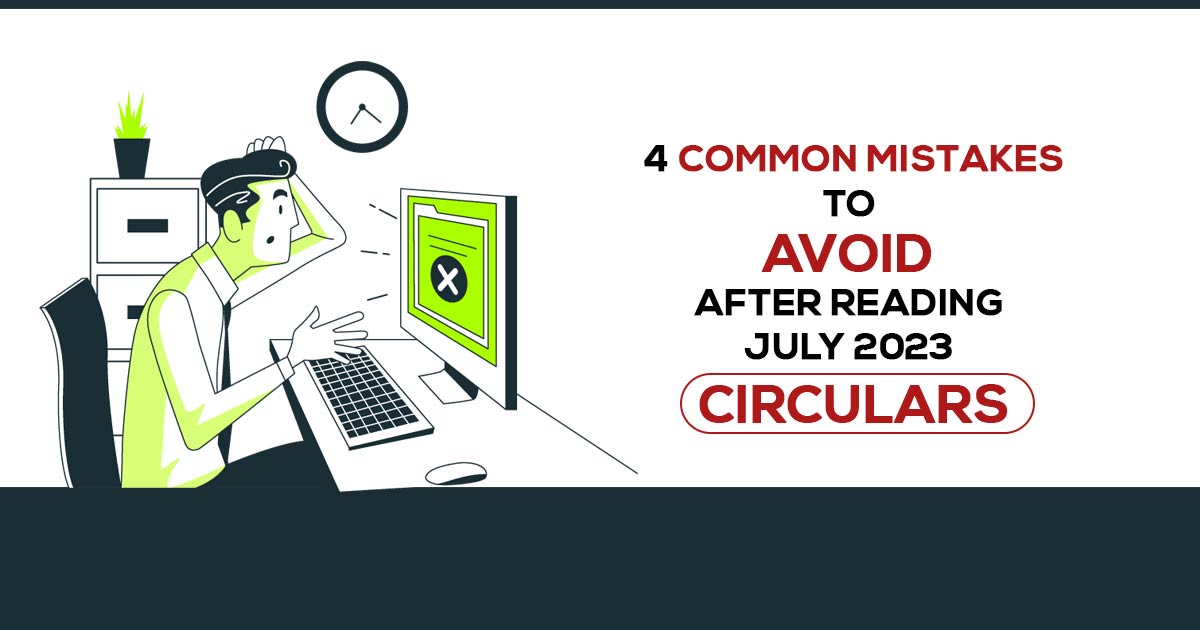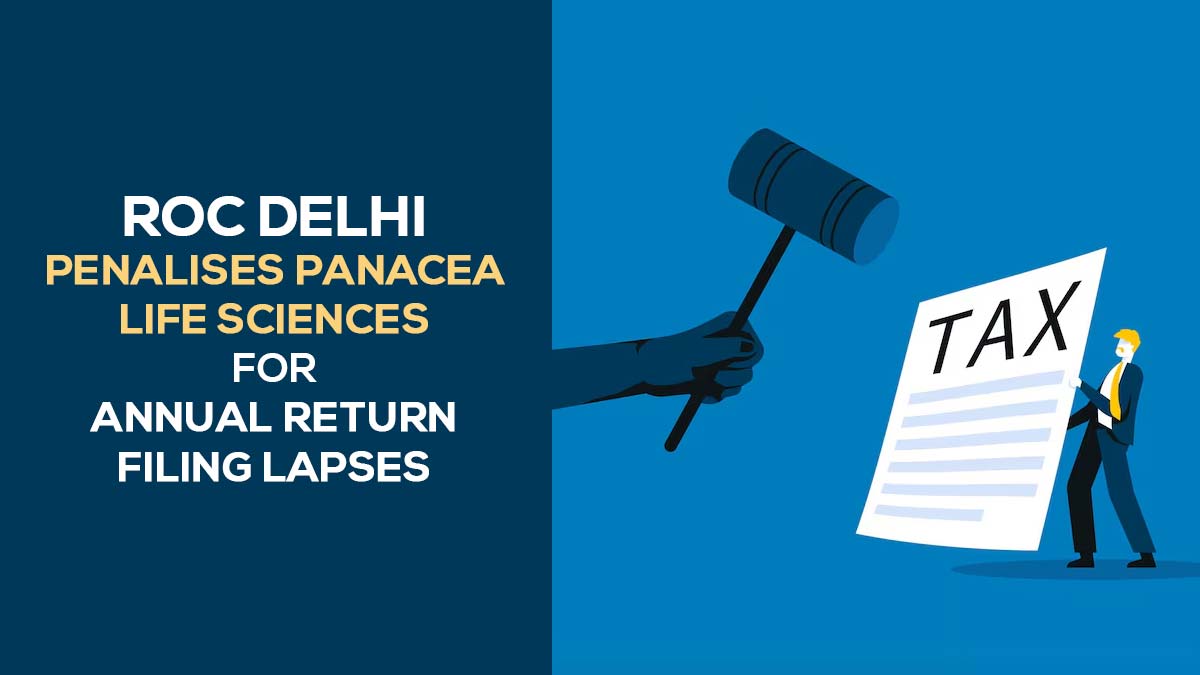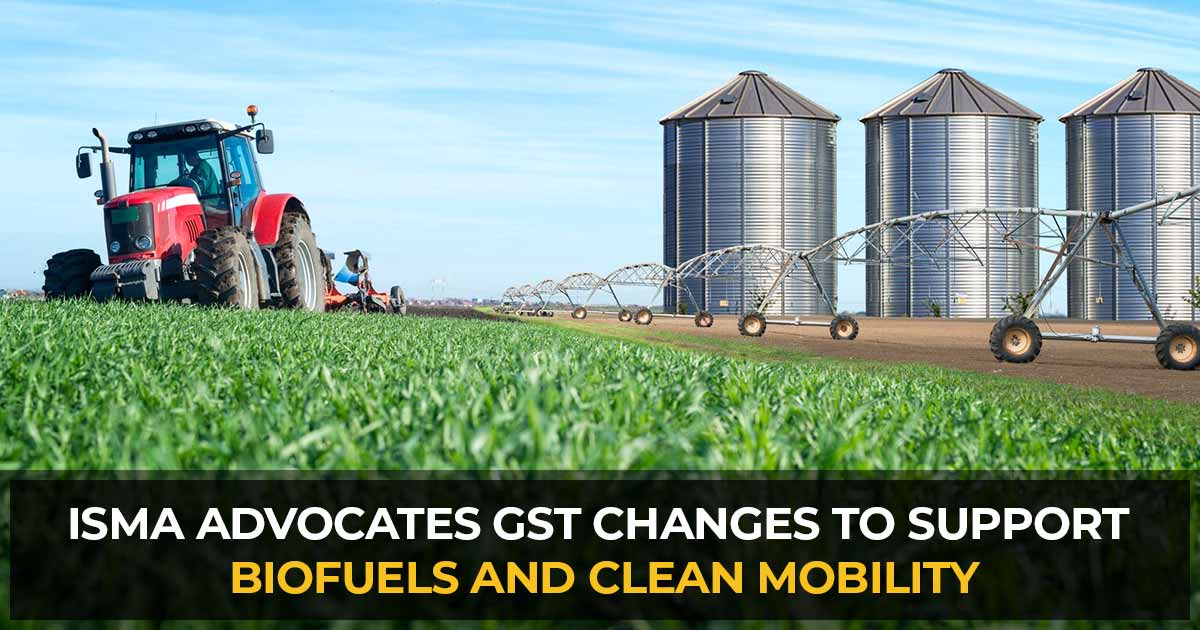
This summary highlights four important circulars issued in July 2023 regarding tax compliance. The first circular addresses the reconciliation of Input Tax Credit (ITC) between GSTR-3B and GSTR-2A, outlining how changes in rules have impacted ITC claims.
The second circular discusses refund-related issues, clarifying that refunds are now limited to the ITC amount shown in GSTR-2B, and it explains the changes in related sections and rules.
The third circular introduces revised e-invoice regulations, requiring certain businesses to generate e-invoices for B2B transactions and export supplies and clarifies the obligation for E-invoicing when dealing with government entities.
The fourth circular delves into Tax Collected at Source (TCS) liability in cases involving multiple E-commerce Operators (ECOs) within a single transaction, providing guidance on which ECO is responsible for TCS collection based on their role in the transaction.
GST Circular No. 193/05/2023 Clarifies the D/B ITC Claim in GSTR-3B & GSTR-2A From 01st April 2019 to 31st Dec 2021
As you may recall, a new GSTR-2A matching concept was introduced on October 9, 2019. The government implemented Rule 36(4) of the CGST Rules, 2017, which stipulated that a taxpayer’s Input Tax Credit claim in GSTR-3B should not exceed 20% of the ITC available in their GSTR-2A form.
This limit of 20% was lessened to
10% from 1-1-2020
5% from 1-1-2021
Starting from January 1, 2022, a new form, GSTR-2B, was introduced, and the government made amendments to Section 16(2) of the CGST Act, 2017, as well as Rule 36(4) of the CGST Rules, 2017. These changes specified that a taxpayer’s ITC claim in GSTR-3B should be limited to the amount of credit available in GSTR-2B.
Subsequently, taxpayers encountered challenges as they began receiving numerous notices from the tax department in the form of ASMT-10, requesting explanations for discrepancies between GSTR-2A and GSTR-3B.
In response to this situation, the government issued Circular No. 183/15/2022-GST on December 27, 2022. Initially applicable for the fiscal years 2017-18 and 2018-19, the circular’s applicability was later extended to FY 2019-20 following a ruling by the Hon’ble Karnataka High Court in the case of Wipro Limited.
Below mentioned are the following that the department is required to do under circular no. 183 –
If the variance is below Rs. 500,000 per supplier for a given fiscal year, the authorized officer will request the claimant to furnish a certificate from the respective supplier, confirming that the supplied goods or services have indeed been provided to the registered individual, and the associated tax has been duly settled by the supplier in their form GSTR-3B return.
If the discrepancy exceeds Rs. 500,000 per supplier in a financial year, the claimant may submit a Chartered Accountant (CA) certificate attesting to the same aforementioned details.
A circular no. 193/05/2023-GST is been issued by the CBIC on 17-7-2023, via which the CBIC has supported the % limit as defined in Rule 36(4), which was applicable till 31-12-2021.
It has been made clear that self-declaration/CA certificates issued in accordance with Circular No. 183 will not be recognized for discrepancies that are more than the percentage allowed by Rule 36(4).
It explains that
Let’s take a case, where the total ITC amount available as per form GSTR-2A of the registered person was Rs. 3,00,000, while the ITC amount claimed in FORM GSTR-3B by the stated registered person at the time of the related tax period was Rs. 5,00,000.
However, according to rule 36(4) of CGST Rules as applicable at the time of the said period, the said registered person was not permitted to claim the ITC in excess of an amount of Rs 3,00,000*1.2 = Rs.3,60,000.
In the aforesaid case, the ITC of Rs 1,40,000 which has been claimed in excess of Rs. 3,60,000 will not be permitted as per rule 36(4) of CGST Rules as applicable at the time of the said period despite when a registered individual has submitted the requisite certificate as prescribed in Circular No. 183/15/2022-GST on 27.12.2022.
The claimed ITC in FORM GSTR-3B in excess of that available in FORM GSTR-2A up to an amount of Rs 60,000 only (i.e. 3,60,000-3,00,000) can be authorized subject to production of the requisite certificates under Circular No. 183/15/2022-GST on 27.12.2022.
The assessee is required to acknowledge the clarification provided via Circular No. 193 on representation to the authorities for the ITC mismatches.
GST Circular No. 194/06/2023 Provides Guidance on TCS Liability U/S 52 of the CGST Act, 2017 Where More Than 1 E-commerce Supplier is Concerned in One Transaction
In the contemporary landscape of the Open Network for Digital Commerce (ONDC), it’s common to encounter multiple E-commerce Operators (ECOs) within a single transaction.
In scenarios involving the ONDC Network or comparable other arrangements, a single transaction can involve multiple ECOs, each serving a distinct role – one facilitating the buyer’s interface and another facilitating the seller’s interface.
In this intricate setup, a critical question arises which of the ECOs is responsible for collecting Tax Collected at Source (TCS) under Section 52 of the CGST Act and remitting it to the government?
Consider the following scenario as an illustration, where multiple ECOs are interconnected:
Buyer —> Buyer-side ECO —> Supplier-side ECO —> Supplier
In this case, two E-commerce platforms link the buyer and the supplier. Examining the provisions of TCS depends on the collection of GST during the payment process by the ECO. Analyzing the depicted diagram, it becomes evident that the payment to the supplier is executed by the Supplier-side ECO.
Consequently, the Central Board of Indirect Taxes and Customs (CBIC) has provided clarity by stating that, in such scenarios, the Supplier-side ECO bears the responsibility for collecting TCS.
CBIC has further elucidated the situation in the following scenario:
Buyer —> Buyer-side ECO —> Supplier (also an ECO)
In this scenario, the Supplier operates as an ECO but does not directly receive payment from the buyer. As there is only one ECO available between the buyer and the supplier, TCS is to be collected, and it is the responsibility of the buyer-side ECO to collect and deposit TCS to the Government.
It is imperative for consultants involved with ECOs to exercise caution and provide advisory services as per the scenarios.
GST Circular No. 197/09/2023 Clarification on Refund-related Problems
Refund claims for January 2022 onwards will be limited to the Input Tax Credit (ITC) amount shown in the GSTR-2B form. This ITC can pertain to either the January 2022 period or any period before it. It’s important to note that this restriction applies to ITC from periods before January 2022, even though the reconciliation between GSTR-2B and GSTR-3B began on January 1, 2022.
Section 41 of the Central Goods and Services Tax (CGST) Act, 2017, which previously dealt with the provisional acceptance of credit, has been amended to make the input stated in GSTR-3B final. Additionally, Section 42 of the CGST Act, 2017, which covered the matching, reversal, and reclaim of such ITC, has been removed as of October 1, 2022, through Notification No. 18/2022-CT on September 28, 2022.
Various declarations have been adjusted to no longer mention Section 42 when filing refund forms.
Furthermore, an explanation added to Rule 89(4) of the CGST Rules, 2017, is now necessary for determining the value of goods exported from India when calculating the GST refund amount in cases of export without payment of tax under a bond or Letter of Undertaking (LUT).
Explanation to Rule 89(4)- Towards the same sub-rule the value of goods exported out of India will be opted as (i) the Free on Board (FOB) value shown in the shipping bill or export form bill as per the case under the shipping bill and bill of export (Forms) Regulations, 2017; or (ii) the value shown in tax invoice or bill of supply, whichever is less.
Through this clarification, the government has limited the calculation of the refund amount to the Free on-board (FOB) value of exported goods, even if the invoice initially values the export goods on a Cost, Insurance, and Freight (CIF) basis.
For refund applications related to “Excess payment of tax,” these applications must be submitted under the “Any other” category on the portal until the relevant facility becomes available.
An illustrative example is provided in the circular. For instance, if goods are exported beyond 3 months from the date of the invoice in the case of goods export or if payment for services in a service export is realized more than 1 year after the issuance of the invoice, then any due refunds must be filed under the “Any other” category on the portal.
Taxpayers filing refund claims should be aware of these restrictions and changes.
GST Circular No. 198/10/2023 for Clarifications on E-invoice Issues
Starting from August 1, 2023, the government has revised the e-invoice regulations. All registered individuals, with certain exceptions, whose total turnover in any of the previous years beginning from the fiscal year 2017-18 surpasses Rs. 5 crores, are now obligated to generate E-Invoices. This requirement applies to business-to-business (B2B) transactions (i.e., transactions with registered entities) and export supplies.
Additionally, some suppliers were issuing invoices to government entities that are registered solely for the purpose of deducting Tax Deducted at Source (TDS) on Goods and Services Tax (GST). There were uncertainties regarding whether registered individuals were required to issue E-Invoices when supplying to such entities.
Upon a close examination of the GST law and the definition of a “Registered person,” as specified in Section 2(94), it is clarified that a “registered person” includes individuals registered under Section 25, excluding those with a Unique Identity Number (UIN). Consequently, government entities registered exclusively for TDS deduction fall within the category of “Registered persons,” and suppliers providing goods or services to such entities are obligated to generate E-Invoices.
Suppliers engaged in transactions with government entities must ensure full compliance with the E-invoice provisions in such cases.









